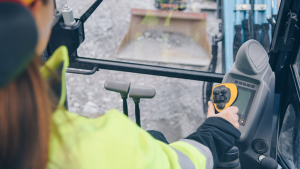
A machine is anything that is created by people to make work easier. It is any tool or invention which multiplies the effect of human effort. Some machines have many parts that move, such as pumps and clocks, and some machines do not have parts that move, such as computers and telephones. When using machinery and work equipment the user becomes exposed to multiple risks. To ensure safety when working around machinery, a number of measures exist that employees can refer to for information and direction. Some of these measures are:
SAFETY OPERATING PROCEDURES (SOPs)
A safe operating procedure (sometimes referred to as a Safe Work Procedure) is a written document that provides step-by-step instructions on how to safely perform a task or activity which involves some risk to health and safety by:
- Making machine operators aware of risks in their work tasks and telling them how to avoid injury or illness while doing those tasks.
- Briefly documenting the risks associated with a work task and listing the appropriate risk control measures, and creating a sequence of steps for doing the task safely.
- Identifying the PPE required, Pre-operational safety checks, Operational safety procedures, housekeeping and any potential hazards and forbidden activities.
JOB SAFETY ANALYSIS
Job safety analysis (JSA) is a risk assessment technique used to eliminate or reduce the occurrence of undesirable incidents during work tasks. The intent of these Guidance Notes is to lay out a job safety analysis (JSA) process that aims to achieve a reduction in personnel injuries by establishing more effective work procedures, and addressing the specific challenges faced by the marine and offshore industries.
PERMIT TO WORK
Permit to Work is a systematic process used to authorize controlled work in nonstandard, potentially hazardous conditions. If you’ve ever hired a contractor to do work in your home or business, you should be familiar with the concept. The process includes risk assessment, establishment of safety protocol, communication and oversight to minimize Environment, Health, Safety & Sustainability risks.
ISOLATIONS
Safe work requires careful planning and meticulous preparation. Before any job can take place, it is necessary to first properly isolate the equipment being worked on from energy sources. As part of the preparations, all potential sources of energy (hazards) must first be identified. Isolations are then put in place. These isolations might involve switching off the electrical supply, depressurizing the equipment, removing any sources of hot/cold, and securing any equipment from movement e.g. rolling/falling. In addition, any process lines that contain hazardous fluids or gases must be properly shut off, disconnected and purged of hazardous chemicals.
In closing, when using machinery it is imperative that you know how to operate it safely. There are a number of documents and processes that one can refer to, to ensure safety when operating machinery at work. It should be noted that if you have not been trained or instructed in how machinery operates, you should not use it.
